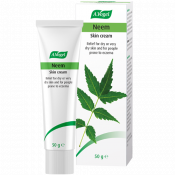Heads, shoulders, knees and TOES!
When the sun is out, the top of our head, arms, shoulders and legs are at the greatest risk of sunburn.
Thankfully, they are easily protected with sun hats, loose clothing and sunscreen. However, our feet can just as easily succumb to sunburn, due to wearing strappy sandals, flip flops, walking barefoot in the sand or even while sunbathing.
No-one likes sunburn; it’s painful, uncomfortable and unsightly (especially when it starts to peel!) and when it’s on your feet it can make simple things, such as walking or wearing shoes, a painful nightmare.
And even if you do remember to dab a little protection on your tootsies, it can easily rub off on shoes, when dipping in and out of a pool or when sweating.
Can you burn the bottom of your feet?
Yes! The skin on the bottom of your feet is very tender and can easily burn very quickly, so you need to make sure you apply sun protection to them, especially if you are sunbathing on your front! You can also wear flip flops or cover the soles of your feet with a towel when sunbathing to protect this sensitive area.
TIP: Remember if you are walking about barefoot, pavements and sand can become hot very quickly and easily burn your feet!
Protect your feet from the sun
There are many simple things you can do to protect yourself and your feet from the sun and in turn avoid the dreaded burn.
#1 - Remember to apply sun protection to your feet!
Before heading out in the sun, apply sun protection (preferably 30 minutes before you go outside) and make sure you don’t forget the top and bottom of your feet and toes.
Re-apply your sun protection every 2 – 4 hours, or more often if you have been swimming or sweating excessively.
TIP: Pick a sunscreen with a sun protection factor (SPF) of at least 15, or higher if you have a fair complexion (like me!) or are more sensitive to the sun.
#2 - Be extra careful at certain times during the day
The more intense the sun is, the greater the risk of burning. Therefore it is important to take extra care between the hours of 11am and 4pm, when the sun is usually at its strongest.
#3 - Protection through diet too
We've mentioned wearing sun cream to help protect your skin, but you can also help protect your skin in other, less obvious ways such as through your diet.
There is some research to suggest that fruit and vegetables high in Beta-carotene can help protect our skin from damage from the sun. Read more on our blog on this topic and why Carrot Juice may just come in handy!
#4 - Don’t make the same mistake twice!
If you have burnt your feet once, your skin will be extra sensitive and even more prone to getting burnt again. It can take up to 6 months for your skin to fully recover from a bad burn, so it’s important to be extra careful.
Seven ways to treat sunburnt feet
Obviously it’s best to avoid sunburn if you can, but sometimes, despite your best intentions, you and your feet can fall prey to the dreaded burn! Don’t fret; there are many simple things you can do to help ease the pain and discomfort of sunburn.
#1 - Cool the burn
Cooling the skin gently, as quickly as possible, will help to relieve some of the pain. Soak your feet in cool water or wrap damp cloths around your sunburnt feet to absorb the heat and help cool them down.
#2 - Soothe it
Apply soothing creams or gels to your sunburnt feet. Aloe vera has been used for decades to treat sunburn. As well as providing cooling relief, it helps to speed up the healing process, moisturising the skin at the same time.
Other soothing remedies include; bathing your feet in milk, rubbing yoghurt over them or soaking them in water and oats and then rinsing off with cool water – these actions will all help to draw heat from the burn.
Another skin calmer which can help soothe sunburn is Neem cream. This fresh herb skin solution can help by soothing and bringing comfort to dry, sunburnt and sore skin, helping the skin to recover faster.
TIP: Extra coolness! For added relief keep your moisturiser in the fridge.
#3 - Cool as ice
If your sunburn is mild then an ice pack can provide some added relief and helps to stop the itching feeling that often occurs. Wrap the ice in a gentle cloth and hold it on top of your sunburnt feet.
#4 - Soak up the hydration
Drink plenty of water to help counteract the drying effects of sunburn. Keeping your body well hydrated also helps to promote healing.
#5 - Don't irritate it
Avoid wearing shoes which will irritate your sunburnt feet, and if possible don’t wear socks until your sunburn has eased. No matter how itchy and annoying it is, try not to rub or scratch any sunburnt areas and leave any blisters alone!
Also be careful when using certain soaps to clean your feet. The chemicals in overly fragranced soap can further dry out irritated skin.
The most important thing to remember is to avoid doing anything that will irritate your damaged skin further and set back your skin’s recovery.
#6 - Put your feet up
It is quite common for sunburnt feet to swell as the skin heals. There are several things you can do to combat this swelling, including elevating your feet above heart level.
#7 - Recovery time
Try to keep your feet out of the sun for as long as possible (preferably at least 24 hours) to give your skin plenty of time to recover.
If you’ve had too much fun in the sun, there are many more ways you can treat sunburn naturally, not just for your feet, but for your whole body too.
Do you forget to protect your feet from the sun? Do you know of any ‘cool’ ways to soothe sunburn? I would love to hear from you…








